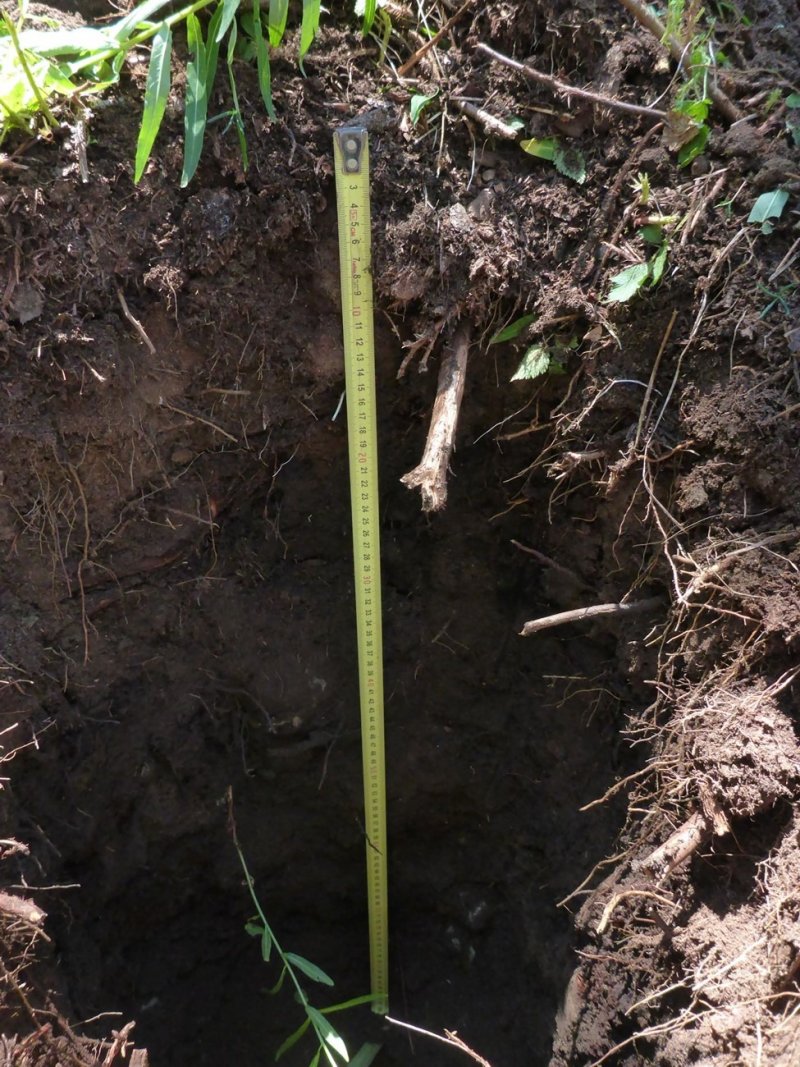Ecological dynamics
The cold extent of these deep soils are forested with a diverse under story. In capturing the transitions in the community phases, there is opportunity to debate whether a transition is between community phases or states. In considering the time required for regeneration and growth of the forests in this climate as well as the fire frequency and management responses, transitions between significant stages of forest growth will be considered as states within this ecological site. Fire is a major player in the natural cycle of this community; however, frequency, intensity and type of fire will influence the shifts within communities. Logging and other alternative land uses has had an impact in these transitions, and these shifts will be described briefly in the following state and transition model. For more information concerning the major forest community groupings in this class, refer to the Habitat type guides referenced below.
State 1
Reference: Subalpine fir
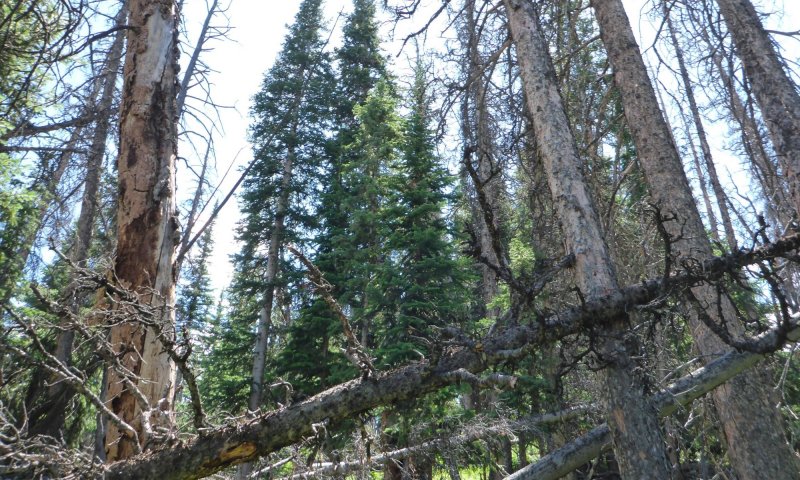
Figure 8. Subalpine fir establishing within a beetle kill stand.
Subalpine fir has the most extensive range reaching from the alpine zone to the fringes of the upland cool woodlands with Douglas-fir and Engelmanns spruce. Lodge pole pine is a major seral species in this community. This state is typical of old standing timber stands with a long duration fire return interval. Although fire has altered much of this community, the State is relatively fire resistant.
Characteristics and indicators. Subalpine fir are the dominant tree species in this state, with both old and young growth showing sufficient signs of reproduciton. There will be other sub-dominant species within the stand as well, including lodge pole pine, white bark pine, and engelmann spruce. The under story of this community is predominately shrubs and forbs with a few grasses intermixed. The composition of the under story is highly variable from north to south and from the west to eastern extent of this community.
Resilience management. Dead material resulting from insect and disease in old growth stands is the greatest threat of decline in these old growth forests. The fuel build up provides the risk of intense fire that will impact this community. Outside of this, this state is said to be resistant to significant change. Under story use by livestock and wildlife, where accessible, can have a significant impact to the under story composition. Utilization or browse on young growth and saplings can slow regeneration of key species especially in subalpine fir saplings.
Dominant plant species
-
subalpine fir (Abies lasiocarpa), tree
-
lodgepole pine (Pinus contorta), tree
-
whitebark pine (Pinus albicaulis), tree
-
Engelmann spruce (Picea engelmannii), tree
-
gooseberry currant (Ribes montigenum), shrub
-
russet buffaloberry (Shepherdia canadensis), shrub
-
thinleaf huckleberry (Vaccinium membranaceum), shrub
-
grouse whortleberry (Vaccinium scoparium), shrub
-
pinegrass (Calamagrostis rubescens), grass
-
sedge (Carex), grass
-
woodrush (Luzula), grass
-
arnica (Arnica), other herbaceous
-
lupine (Lupinus), other herbaceous
-
twinflower (Linnaea borealis), other herbaceous
Dominant resource concerns
-
Aggregate instability
-
Plant productivity and health
-
Plant structure and composition
-
Wildfire hazard from biomass accumulation
-
Terrestrial habitat for wildlife and invertebrates
-
Inadequate livestock water quantity, quality, and distribution
Community 1.1
Subalpine fir Dominant
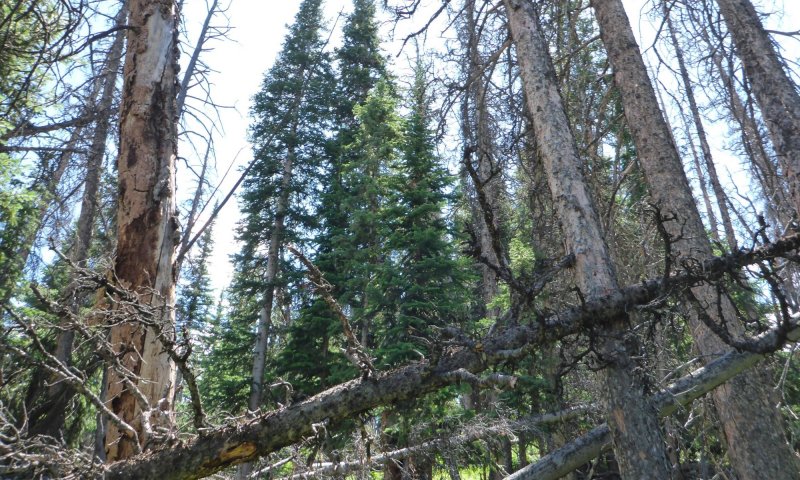
Figure 9. Subalpine fir establishing within a beetle kill stand.
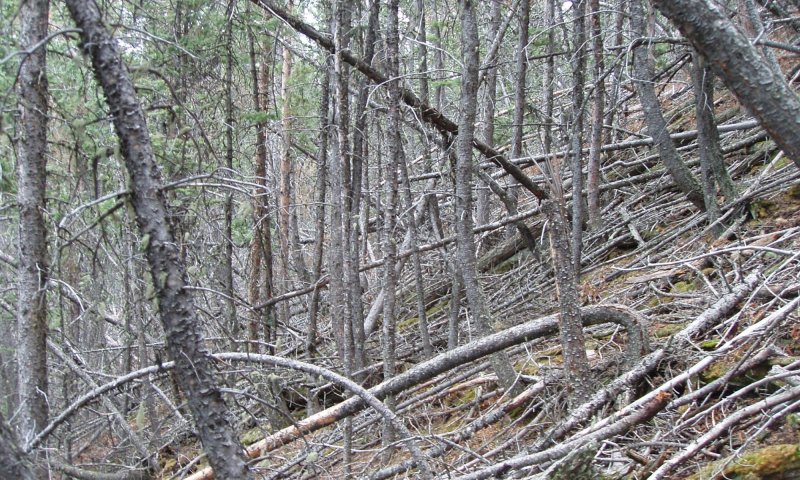
Figure 10. Old Growth Subalpine fir stand.
Subalpine fir are dominant on this site with an intermixed canopy with lodge pole pine and white bark pine. Under story canopy is diverse depending on openness of the over story canopy and access potential to the site.
Resilience management. This state is slow to mature, slow to change once mature. Fire frequency is long-term (150 years), so old growth stands are common. The fire resistance of this community relates to the dead or down fall within the timber stand and the health of the standing timber. Managing this community to maintain a diversity of age classes, and to minimize disease and insect impacts, improves resiliency.
Dominant plant species
-
subalpine fir (Abies lasiocarpa), tree
-
lodgepole pine (Pinus contorta), tree
-
whitebark pine (Pinus albicaulis), tree
-
gooseberry currant (Ribes montigenum), shrub
-
russet buffaloberry (Shepherdia canadensis), shrub
-
grouse whortleberry (Vaccinium scoparium), shrub
-
thinleaf huckleberry (Vaccinium membranaceum), shrub
-
pinegrass (Calamagrostis rubescens), grass
-
Geyer's sedge (Carex geyeri), grass
-
woodrush (Luzula), grass
-
twinflower (Linnaea borealis), other herbaceous
-
lupine (Lupinus), other herbaceous
-
arnica (Arnica), other herbaceous
State 2
Post Disturbance
The succession of the subalpine fir community following a major disturbance, generally an intense stand replacing fire or timber harvest/logging, includes two major stages before the stand can transition back to a subalpine fir community. These two phases include a shrub dominated community that then matures to a lodge pole pine community. Community composition will vary across the extent of this state based on parent materials, aspect, slope, and other site factors (historic use, past disturbance history) that are too broad to cover at this time.
Characteristics and indicators. The initial indicator of this state is the evidence of subalpine fir stands that have recently burned, disturbed, or have been harvested. The regeneration on this state includes primarily lodge pole pine at first, but engelmann spruce, white bark pine, and Douglas-fir are commonly associated species that may be present. Fireweed is a major indicator species of the disturbance, with ceanothus. As the community establishes and matures, lodge pole pine and Douglas-fir are the dominant forest components.
Resilience management. These communities are successional, and although the maturation process is relatively slow, the community is in a state of change or flux. Low intensity fires help to maintain a healthy forest as it matures, and influences the rate and type of change that occurs within each location. This state is resistant to significant change and is resilient, with adaptations occurring slowly - with time.
Dominant plant species
-
lodgepole pine (Pinus contorta), tree
-
Douglas-fir (Pseudotsuga menziesii), tree
-
Engelmann spruce (Picea engelmannii), tree
-
whitebark pine (Pinus albicaulis), tree
-
ceanothus (Ceanothus), shrub
-
thinleaf huckleberry (Vaccinium membranaceum), shrub
-
gooseberry currant (Ribes montigenum), shrub
-
grouse whortleberry (Vaccinium scoparium), shrub
-
pinegrass (Calamagrostis rubescens), grass
-
sedge (Carex), grass
-
woodrush (Luzula), grass
-
arnica (Arnica), other herbaceous
-
fireweed (Chamerion angustifolium), other herbaceous
-
twinflower (Linnaea borealis), other herbaceous
Dominant resource concerns
-
Sheet and rill erosion
-
Classic gully erosion
-
Organic matter depletion
-
Aggregate instability
-
Plant productivity and health
-
Plant structure and composition
-
Wildfire hazard from biomass accumulation
-
Terrestrial habitat for wildlife and invertebrates
-
Feed and forage imbalance
-
Inadequate livestock water quantity, quality, and distribution
Community 2.1
Recent Post Fire: Shrub Dominant
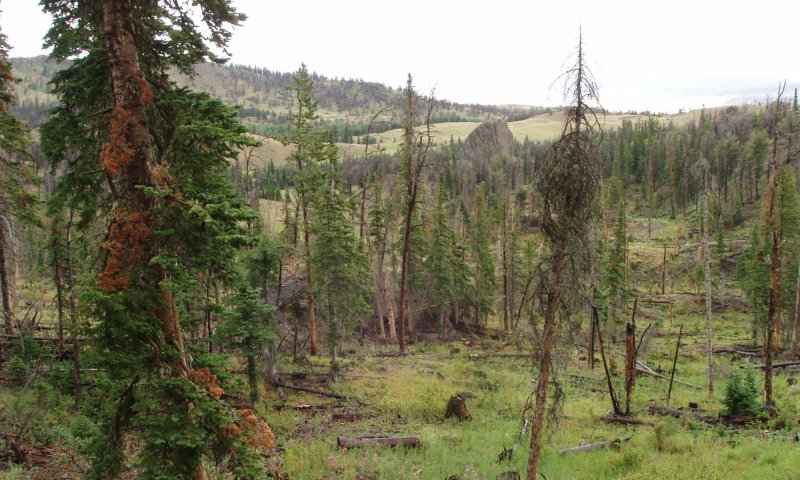
Figure 11. Post fire and insect damage remnants of subalpine fir and lodge pole pine.
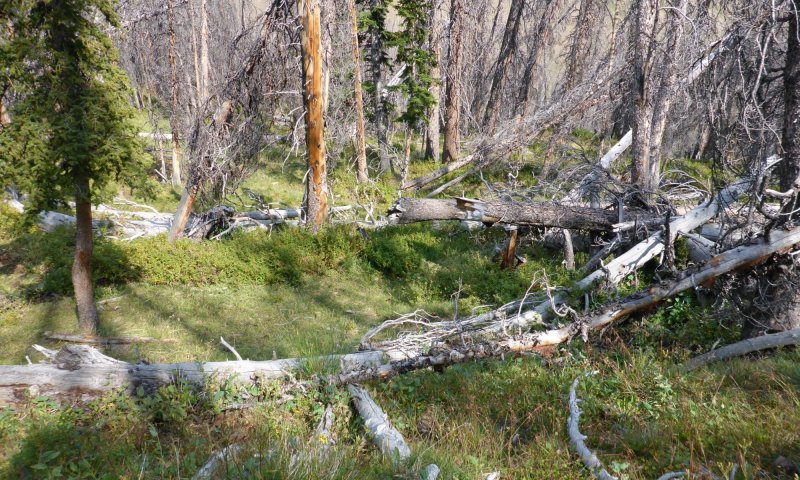
Figure 12. The shrub dominant community occurring after large scale die back of subalpine fir due to beetle infestation.
Following an intense stand replacing fire or other major disturbance, the first community to establish is a shrub dominated community. Location and historic disturbances and use will influence the composition of the community. The main characteristic of this community phase is a shrub dominated community with only young sapling trees present in the canopy.
Resilience management. This community is resilient to disturbances, adapting to the conditions at hand. However, the community is in flux to return to a forested ecosystem. Management of this site to reduce tree establishment and to maintain a herbaceous cover type can be achieved with inputs.
Dominant plant species
-
ceanothus (Ceanothus), shrub
-
grouse whortleberry (Vaccinium scoparium), shrub
-
thinleaf huckleberry (Vaccinium membranaceum), shrub
-
gooseberry currant (Ribes montigenum), shrub
-
pinegrass (Calamagrostis rubescens), grass
-
Geyer's sedge (Carex geyeri), grass
-
spike fescue (Leucopoa kingii), grass
-
Idaho fescue (Festuca idahoensis), grass
-
arnica (Arnica), other herbaceous
-
twinflower (Linnaea borealis), other herbaceous
-
milkvetch (Astragalus), other herbaceous
-
fireweed (Chamerion angustifolium), other herbaceous
Community 2.2
Lodgepole pine/Douglas-fir Dominant

Figure 13. Lodge pole pine and white bark pine community with subalpine fir.
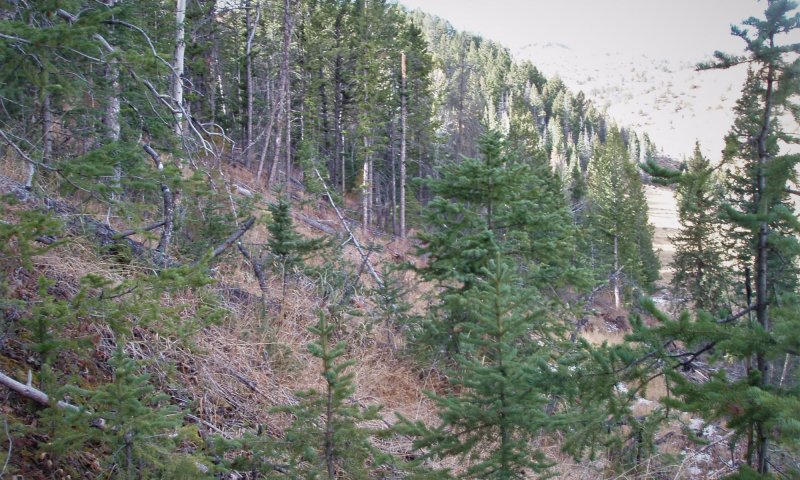
Figure 14. Old growth lodge pole pine timber stand with subalpine fir present in the understory.
The re-establishment of the woody canopy following a major fire or other major disturbance is not a rapid occurrence on these sites, and is a successional process. Initially, lodge pole pine and Douglas-fir establish and becomes dominant with white bark pine, subalpine fir, and englemann spruce as sub-dominant species. The under story maintains a strong shrubby component with intermittent forbs and grasses.
Resilience management. Fire, disease and insect impact are threats to this community phase. The fire frequency of this community phase is long-term. The aging of this what leads to the transition back to reference with Subapline fir taking dominance in the community.
Dominant plant species
-
lodgepole pine (Pinus contorta), tree
-
Douglas-fir (Pseudotsuga menziesii), tree
-
subalpine fir (Abies lasiocarpa), tree
-
russet buffaloberry (Shepherdia canadensis), shrub
-
gooseberry currant (Ribes montigenum), shrub
-
thinleaf huckleberry (Vaccinium membranaceum), shrub
-
pinegrass (Calamagrostis rubescens), grass
-
Geyer's sedge (Carex geyeri), grass
-
Ross' sedge (Carex rossii), grass
-
heartleaf arnica (Arnica cordifolia), other herbaceous
-
western meadow-rue (Thalictrum occidentale), other herbaceous
-
twinflower (Linnaea borealis), other herbaceous
Pathway CP2.1-2.2
Community 2.1 to 2.2
Recent Post Fire: Shrub Dominant
Lodgepole pine/Douglas-fir Dominant
The transition from the shrub dominated community to a forest stand, time is the mechanism with the greatest control. However, rest or management of the use of these areas has an influence on the establishment of trees.
Pathway CP2.2-2.1
Community 2.2 to 2.1
Lodgepole pine/Douglas-fir Dominant
Recent Post Fire: Shrub Dominant
The transition from the established tree community back to a shrub dominated community is driven by fire, insect and disease impacts, or other major disturbances including microburts and logging/timber activities. With the death or removal of tree cover, the shrub under story becomes the dominant cover on this site.
| Upland Wildlife Habitat Management |
|
| Prescribed Forestry |
|
| Patch-burning to enhance wildlife habitat |
|
| Forest stand improvement for habitat and soil quality |
|
| Wildlife corridors |
|
| Forest stand improvement pre-treating vegetation and fuels |
|
| Forest Stand Improvement, Prescribed burning |
|
| Forest Stand Improvement to Reduce Wildfire Risk |
|
| Forest stand improvement pre-treating vegetation and fuels preceding a prescribed fire |
|
Transition T1-2
State 1 to 2
Transition to the post disturbance state is driven primarily by stand replacement fires, as well as by insect and disease impacts on the tree stand. Major logging practices, including clear-cutting, can also be a mechanism to force this change. In this system fire frequency is long, and so the fire that occur are intense in nature.
Constraints to recovery. Time and stability of the site are the major constraints to recovery. Stability of the site relates to the slope, parent material and soil characteristics of these sites. After intense fires, erosion is a concern that could hinder recovery of this site.
Context dependence. Accessibility of the site by livestock and human impacts will influence some of the variability in the recovery constraints of this site.
Restoration pathway R2-1
State 2 to 1
Over time, and with the absence of fire, insect and disease damage, this community will mature back to the subalpine fir dominant tree stand. The use of timber management practices can assist in the restoration process. However, time is the key mechanism.
| Upland Wildlife Habitat Management |
|
| Forest Stand Improvement |
|
| Forest Land Management |
|
| Prescribed Forestry |
|
| Patch-burning to enhance wildlife habitat |
|
| Forest stand improvement for habitat and soil quality |
|
| Wildlife corridors |
|
| Forest stand improvement pre-treating vegetation and fuels |
|
| Forest Stand Improvement, Prescribed burning |
|
| Forest Stand Improvement for Soil Quality |
|
| Forest stand improvement pre-treating vegetation and fuels preceding a prescribed fire |
|


